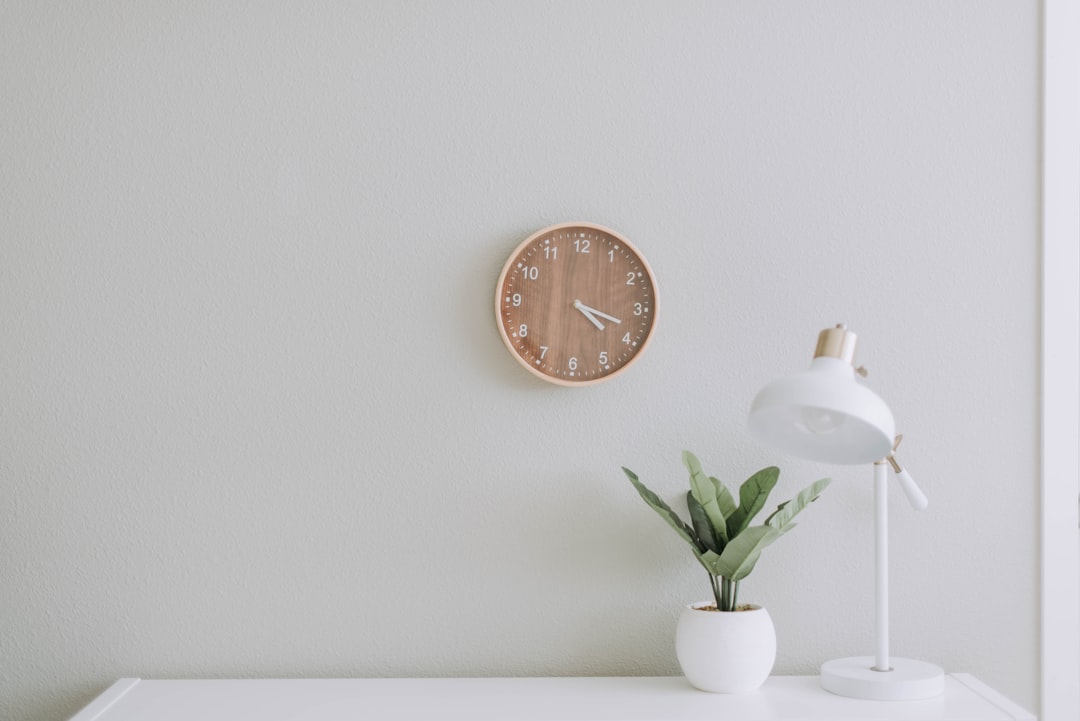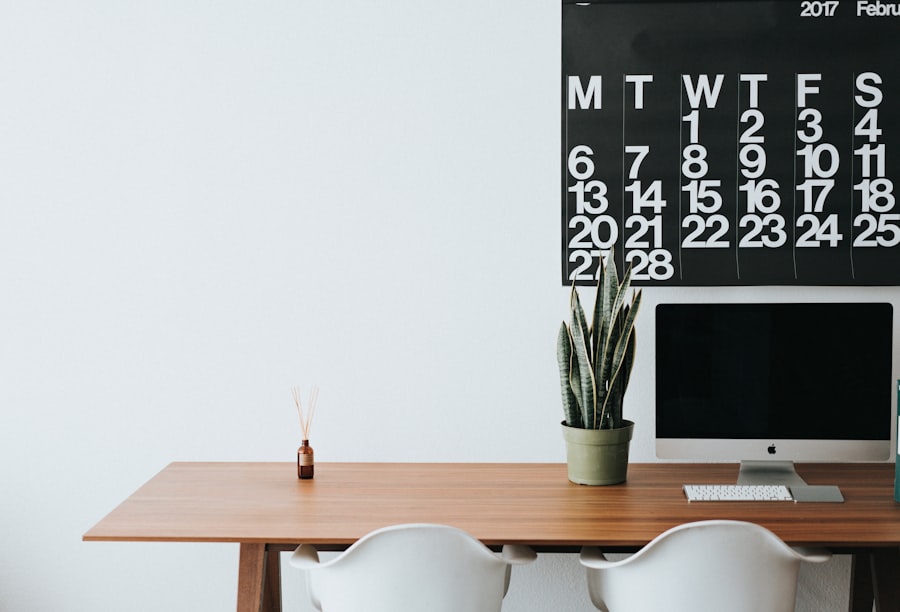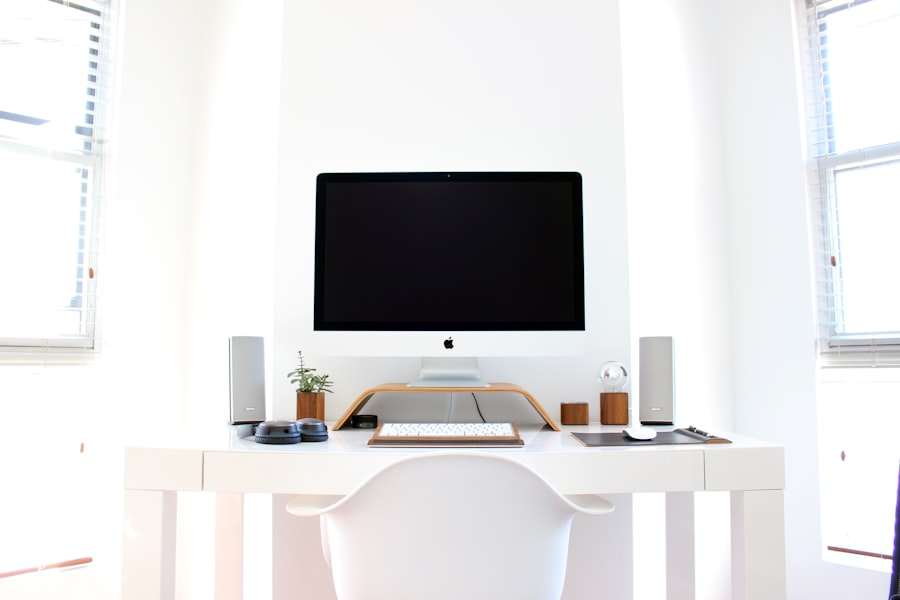
Minimalism is a lifestyle and design philosophy that emphasizes simplicity, functionality, and the reduction of excess. It involves removing unnecessary elements and concentrating on what truly adds value to one’s life. In design and architecture, minimalism is characterized by clean lines, open spaces, and a lack of clutter.
As a lifestyle, minimalism encourages individuals to declutter their physical and mental environments, prioritize experiences over material possessions, and live with intention. The minimalist movement in art and design originated in the 1960s as a response to the excesses of abstract expressionism. Artists and designers aimed to create work that was reduced to its essential components, often utilizing simple geometric shapes, monochromatic color schemes, and industrial materials.
This artistic movement has since evolved into a broader lifestyle philosophy that extends beyond aesthetics to encompass various aspects of life. Minimalism is not about deprivation or austerity; rather, it focuses on identifying what is truly important and finding satisfaction in simplicity.
Key Takeaways
- Minimalism is about simplifying and decluttering your life, focusing on what truly matters and eliminating excess.
- Minimalism can lead to reduced stress, increased productivity, and improved mental clarity.
- Minimalist design and architecture focus on clean lines, simple forms, and functional spaces.
- Minimalist fashion and lifestyle emphasize quality over quantity, with a focus on essential items and timeless style.
- Embracing minimalism in your life involves decluttering your space, prioritizing experiences over possessions, and practicing mindfulness.
The Benefits of Minimalism
Embracing minimalism can have a multitude of benefits for individuals. By decluttering their physical spaces, people can experience a sense of calm and clarity. A minimalist home is free from the distractions of excess stuff, allowing for a more peaceful and focused environment.
In terms of finances, minimalism encourages individuals to be more intentional with their spending, prioritizing quality over quantity and avoiding the trap of consumerism. This can lead to greater financial stability and freedom. Minimalism also has environmental benefits, as it promotes the idea of “less is more.” By consuming and wasting less, individuals can reduce their environmental impact and contribute to a more sustainable world.
In terms of mental health, minimalism encourages individuals to let go of the constant pursuit of more and instead find contentment in the present moment. This can lead to reduced stress and anxiety, as well as a greater sense of gratitude for what one already has.
Minimalism in Design and Architecture

In design and architecture, minimalism is characterized by clean lines, simple forms, and a focus on functionality. Minimalist spaces are often open and uncluttered, with an emphasis on natural light and materials. This design philosophy creates a sense of calm and serenity, allowing for a more peaceful living environment.
Minimalist architecture often features simple geometric shapes, neutral color palettes, and an integration with the surrounding landscape. Minimalist design is also characterized by a focus on quality over quantity. Instead of filling a space with unnecessary furniture and decor, minimalist interiors feature carefully curated pieces that serve a specific purpose.
This approach creates a sense of harmony and balance within a space, allowing for a more intentional and mindful living experience. In terms of materials, minimalist design often incorporates natural elements such as wood, stone, and metal, creating a sense of warmth and authenticity.
Minimalism in Fashion and Lifestyle
| Category | Metrics |
|---|---|
| Fashion | Number of minimalist clothing brands |
| Fashion | Percentage of wardrobe consisting of minimalist pieces |
| Lifestyle | Number of minimalist lifestyle blogs |
| Lifestyle | Percentage of minimalist home decor enthusiasts |
In fashion, minimalism is characterized by clean silhouettes, neutral color palettes, and a focus on quality over quantity. Minimalist wardrobes are built around timeless pieces that can be mixed and matched to create a variety of looks. This approach not only reduces the need for excessive shopping but also promotes a more sustainable approach to fashion.
Minimalist fashion is also about embracing simplicity and rejecting the constant cycle of trends and fast fashion. In lifestyle, minimalism encourages individuals to declutter their homes and lives, focusing on what truly adds value and letting go of the rest. This can involve simplifying daily routines, prioritizing experiences over possessions, and cultivating a sense of gratitude for the present moment.
Minimalist living is about finding contentment in simplicity and letting go of the constant pursuit of more.
How to Embrace Minimalism in Your Life
Embracing minimalism in your life can be a transformative experience that leads to greater clarity, peace, and contentment. One way to start is by decluttering your physical space. Take an inventory of your belongings and let go of anything that no longer serves a purpose or brings you joy.
This can be a challenging process, but it can also be incredibly liberating. Another way to embrace minimalism is by being more intentional with your time and energy. Prioritize activities and relationships that bring you joy and fulfillment, and let go of anything that feels draining or unnecessary.
This can involve setting boundaries with your time and learning to say no to things that don’t align with your values. In terms of finances, minimalism encourages individuals to be more mindful with their spending. Instead of constantly chasing after the latest trends or material possessions, focus on investing in experiences and quality items that bring lasting value.
This approach can lead to greater financial freedom and a deeper sense of satisfaction.
Minimalism and Sustainability

Minimalism and sustainability go hand in hand, as both philosophies emphasize the idea of “less is more.” By consuming and wasting less, individuals can reduce their environmental impact and contribute to a more sustainable world. This can involve making conscious choices about the products we buy, the resources we use, and the waste we generate. In terms of fashion, minimalism promotes the idea of building a timeless wardrobe based on quality pieces that will last for years to come.
This approach reduces the need for constant shopping and contributes to a more sustainable approach to fashion. In terms of home design, minimalism encourages individuals to prioritize natural materials, energy-efficient appliances, and sustainable building practices.
The Psychological Impact of Minimalism
The psychological impact of minimalism can be profound, leading to greater clarity, peace, and contentment. By decluttering our physical spaces, we can create a more peaceful and focused environment that allows for greater mental clarity. This can lead to reduced stress and anxiety, as well as a greater sense of calm.
Minimalism also encourages individuals to let go of the constant pursuit of more and find contentment in the present moment. This can lead to greater gratitude for what one already has and a deeper sense of fulfillment in life. By prioritizing experiences over possessions, individuals can cultivate a greater sense of joy and connection in their lives.
In conclusion, minimalism is not just a design philosophy but a way of life that can lead to greater clarity, peace, and contentment. By embracing simplicity, functionality, and the elimination of excess, individuals can create more peaceful living environments, reduce their environmental impact, and cultivate a greater sense of gratitude for the present moment. Whether it’s through decluttering our physical spaces or being more intentional with our time and energy, minimalism offers a path to a more mindful and fulfilling way of living.
FAQs
What is minimalism?
Minimalism is a design and lifestyle movement that focuses on simplicity and functionality. It emphasizes the idea of “less is more” and encourages the use of only essential elements.
How does minimalism apply to design?
In design, minimalism involves using clean lines, simple color palettes, and uncluttered spaces. It often eliminates unnecessary decorations and focuses on the functionality of the design.
What are the benefits of minimalism?
Minimalism can lead to a more organized and peaceful living environment. It can also reduce stress and promote a sense of calm by eliminating excess clutter and distractions.
How does minimalism apply to lifestyle?
In lifestyle, minimalism encourages people to focus on what truly matters to them and eliminate unnecessary possessions and commitments. It promotes intentional living and mindful consumption.
Is minimalism only about decluttering and getting rid of possessions?
While decluttering and simplifying possessions are important aspects of minimalism, it also encompasses a mindset of intentional living, prioritizing experiences over material possessions, and focusing on what brings true value and joy.






